Related Research Articles
Sedan may refer to:
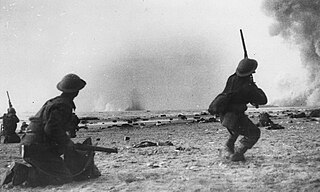
The Battle of Dunkirk was fought around the French port of Dunkirk (Dunkerque) during the Second World War, between the Allies and Nazi Germany. As the Allies were losing the Battle of France on the Western Front, the Battle of Dunkirk was the defence and evacuation of British and other Allied forces to Britain from 26 May to 4 June 1940.

Ardennes is a department in the Grand Est region of northeastern France named after the broader Ardennes. Its prefecture is the town Charleville-Mézières. The department has 270,582 inhabitants. The inhabitants of the department are known as Ardennais or Ardennaises.

Sedan is a commune in the Ardennes department and Grand Est region of north-eastern France. It is also the chef-lieu of the arrondissement of the same name.
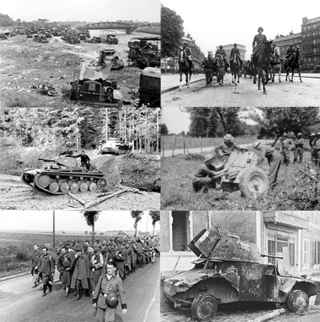
The Battle of France, also known as the Western Campaign, the French Campaign and the Fall of France, was the German invasion of France during the Second World War. France and the Low Countries were conquered, ending land operations on the Western Front until the Normandy landings on 6 June 1944.

The Meuse–Argonne offensive was a major part of the final Allied offensive of World War I that stretched along the entire Western Front. It was fought from September 26, 1918, until the Armistice of November 11, 1918, a total of 47 days. The Meuse–Argonne offensive was the largest in United States military history, involving 1.2 million American soldiers. It is also the deadliest battle in the history of the United States Army, resulting in over 350,000 casualties, including 28,000 German lives, 26,277 American lives and an unknown number of French lives. American losses were worsened by the inexperience of many of the troops, the tactics used during the early phases of the operation and the widespread onset of the global influenza outbreak called the "Spanish flu".
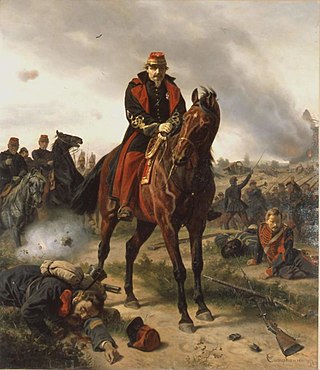
The Battle of Sedan was fought during the Franco-Prussian War from 1 to 2 September 1870. Resulting in the capture of Emperor Napoleon III and over a hundred thousand troops, it effectively decided the war in favour of Prussia and its allies, though fighting continued under a new French government.
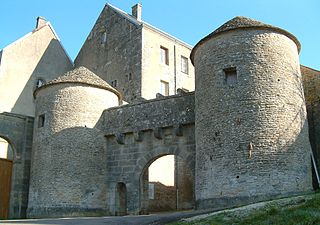
Flavigny-sur-Ozerain is a commune in the French department of Côte-d'Or, in Bourgogne-Franche-Comté.

The siege of Metz was a battle fought during the Franco-Prussian War from August 19 to October 27, 1870 and ended in a decisive allied German victory.

The 10th Panzer Division was an armoured division in the German Army, the Heer, during World War II, established in March 1939.

The Battle of Mars-la-Tour was fought on 16 August 1870, during the Franco-Prussian War, near the village of Mars-La-Tour in northeast France. One Prussian corps, reinforced by two more later in the day, encountered the entire French Army of the Rhine in a meeting engagement and, surprisingly, forced the Army of the Rhine to retreat toward the fortress of Metz.
The French 1st Cavalry Brigade was a military unit of the French Army which served during World War II. A partly horse-mounted unit, it fought in the Battle of Belgium and the Battle of France in May 1940. An element of the brigade was noted for its defence of Vendresse against German tanks, delaying their opponents for most of the day. After the Armistice of 22 June 1940 the brigade was reformed as a unit of Vichy France, but it was disbanded in November 1942.

XXXXI Panzer Corps was a Panzer (armoured) corps in the German Army during World War II.

The Battle of Bazeilles was fought on 1 September 1870 during the Franco-Prussian War as a portion of the larger Battle of Sedan and was one of the first battles to feature modern urban warfare tactics. It took place in Bazeilles, France, a small village in the department of Ardennes near Sedan, and involved a force of Bavarian soldiers battling against French marines and partisans.
Gissey-sous-Flavigny is a commune in the Côte-d'Or department in eastern France.
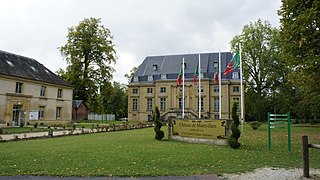
Bazeilles is a commune in the Ardennes department in the Grand Est region of northern France. On 1 January 2017, the former communes of Rubécourt-et-Lamécourt and Villers-Cernay were merged into Bazeilles.
Events from the year 1940 in France.
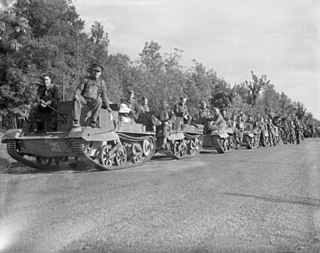
The British Expeditionary Force (BEF) was the contingent of the British Army sent to France in 1939 after Britain and France declared war on Nazi Germany on 3 September, beginning the Second World War. The BEF existed from 2 September 1939 when the BEF GHQ was formed until 31 May 1940, when GHQ closed down and its troops reverted to the command of Home Forces. During the 1930s, the British government had planned to deter war by abolishing the Ten Year Rule and rearming from the very low level of readiness of the early 1930s. The bulk of the extra money went to the Royal Navy and the Royal Air Force but plans were made to re-equip a small number of Army and Territorial Army divisions for service overseas.
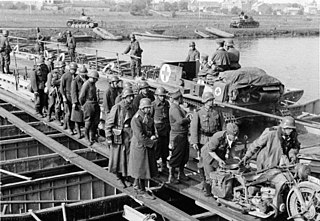
The Battle of Sedan or Second Battle of Sedan took place in the Second World War during the Battle of France in 1940. It was part of the German Wehrmacht's operational plan codenamed Fall Gelb for an offensive through the hilly and forested Ardennes, to encircle the Allied armies in Belgium and north-eastern France. German Army Group A crossed the Meuse with the intention of capturing Sedan and pushing westwards towards the Channel coast, to trap the Allied forces that were advancing east into Belgium, as part of the Allied Dyle Plan.

The Fortified Sector of Montmédy was the French military organisation that in 1940 controlled the section of the Maginot Line between Sedan and Longuyon, a distance of about 60 kilometres (37 mi). The sector was not as strongly defended as other sections of the Maginot Line, facing the southern Ardennes region of Belgium. Large portions of the Montmédy sector were defended by fortified houses, blockhouses or casemates. The sector includes only four ouvrages of the type found in stronger sections of the Line. The weakly defended area in front of Sedan was the scene of a major breakthrough by German forces in the opening of the Battle of France. This was followed by a German assault on the Maginot Ouvrage La Ferté, which killed the entire garrison, the only such event on the Maginot Line.
References
- ↑ Frieser, Karl-heinz (2005). The Blitzkrieg legend: the 1940 campaign in the West. Naval Institute Press. p. 187. ISBN 978-1-59114-294-2 . Retrieved 25 April 2013.